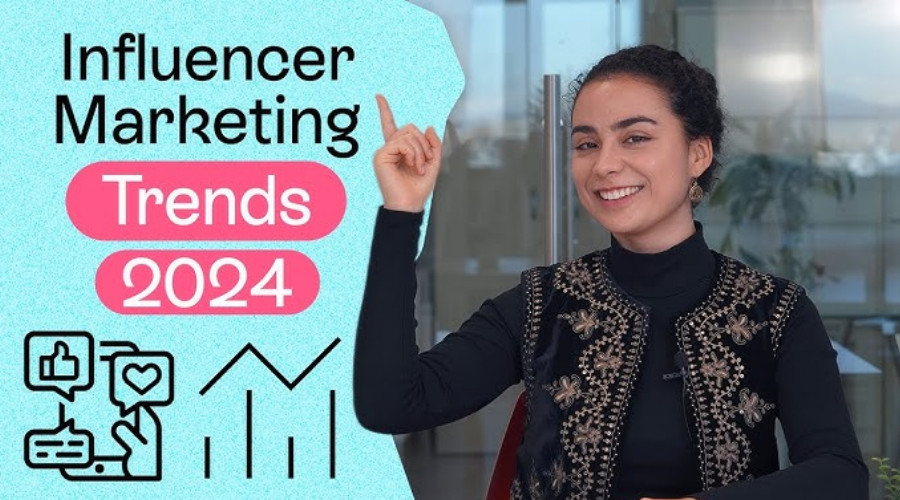Influencer marketing has revolutionized the way brands connect with their audiences. It’s a game-changer for online visibility. In today’s digital age, this strategy offers businesses unmatched opportunities for growth. Let’s dive into how influencer marketing can skyrocket your brand’s success.
What Is Influencer Marketing?
Influencer marketing is a collaboration between brands and individuals with an online following. Influencers promote your products or services to their loyal audience. Their followers trust their recommendations, making this an effective strategy for increasing brand awareness and driving sales.
Why Influencer Marketing Works So Well
Influencers build trust over time with their audience. Their followers value their opinions. Brands leverage this trust to connect with a highly targeted group of consumers. Moreover, influencer content feels authentic, unlike traditional advertisements.
Types of Influencers: Choosing the Right Fit for Your Brand
Influencers come in all shapes and sizes. Choosing the right type is crucial.
- Mega-influencers: Over a million followers. Ideal for massive campaigns.
- Macro-influencers: Between 100k-1M followers. Great for widespread reach.
- Micro-influencers: Between 10k-100k followers. Perfect for niche audiences.
- Nano-influencers: Less than 10k followers. Highly engaged followers in specific communities.
Each category offers unique benefits, depending on your campaign goals.
Steps to Build a Successful Influencer Marketing Campaign
Launching an influencer marketing campaign involves a strategic approach. Here’s how to do it effectively:
- Set Clear Goals
Determine what you want—brand awareness, engagement, or sales. - Identify Your Audience
Know who you’re targeting and tailor your campaign accordingly. - Find Relevant Influencers
Use tools like Upfluence or Heepsy to discover influencers in your niche. - Establish Partnerships
Approach influencers with personalized proposals highlighting mutual benefits. - Track and Analyze Results
Measure key metrics like engagement, reach, and ROI to optimize future campaigns.
The Role of Social Media Platforms in Influencer Marketing
Different platforms offer unique opportunities for influencer marketing.
- Instagram: Visual content thrives here. Ideal for fashion, beauty, and lifestyle brands.
- YouTube: Great for tutorials, reviews, and long-form storytelling.
- TikTok: A hub for viral trends. Perfect for engaging younger audiences.
- Twitter: Quick updates and trending topics work well here.
- LinkedIn: Best for B2B campaigns and professional audiences.
Choose platforms based on your target audience’s preferences and habits.
Content Types That Perform Best in Influencer Marketing
The type of content created can make or break your campaign. Popular options include:
- Sponsored Posts: Influencers share posts promoting your product.
- Unboxings: Authentic reactions to your product’s packaging and quality.
- Tutorials: Step-by-step guides showcasing your product’s benefits.
- Giveaways: Boosts engagement and brand visibility through contests.
- Reviews: Honest feedback builds trust among potential customers.
Always ensure the content aligns with your brand values and message.
Benefits of Influencer Marketing for Your Brand
The advantages of influencer marketing are undeniable. Here are some key benefits:
- Increased Credibility: Influencers build trust with their audience.
- Higher Engagement Rates: Authentic content drives meaningful interactions.
- Cost-Effectiveness: Influencer campaigns often cost less than traditional ads.
- Access to Niche Audiences: Influencers reach specific demographics effectively.
- Boosted Conversions: Recommendations translate into higher sales.
These benefits make influencer marketing an essential strategy in today’s market.
Mistakes to Avoid in Influencer Marketing
Even the best campaigns can fail if not executed properly. Here are common pitfalls:
- Ignoring Authenticity: Don’t force influencers to sound like ads.
- Choosing the Wrong Influencer: Misaligned partnerships can damage your brand image.
- Overlooking Metrics: Always analyze performance to understand what works.
- Not Defining Goals: Without clear objectives, your campaign may lack direction.
- Lack of Communication: Foster transparent relationships with influencers.
Avoiding these mistakes ensures your campaigns achieve maximum impact.
The Future of Influencer Marketing
The influencer marketing landscape is constantly evolving. AI-driven tools now help brands identify ideal influencers. Emerging platforms like BeReal and Clubhouse provide new opportunities. Authenticity remains key, as audiences crave genuine connections.
Conclusion
Influencer marketing is a powerful tool to amplify your brand’s presence. By leveraging trusted voices, you can reach the right audience effectively. Focus on authenticity, partnerships, and measurable results for long-term success.



